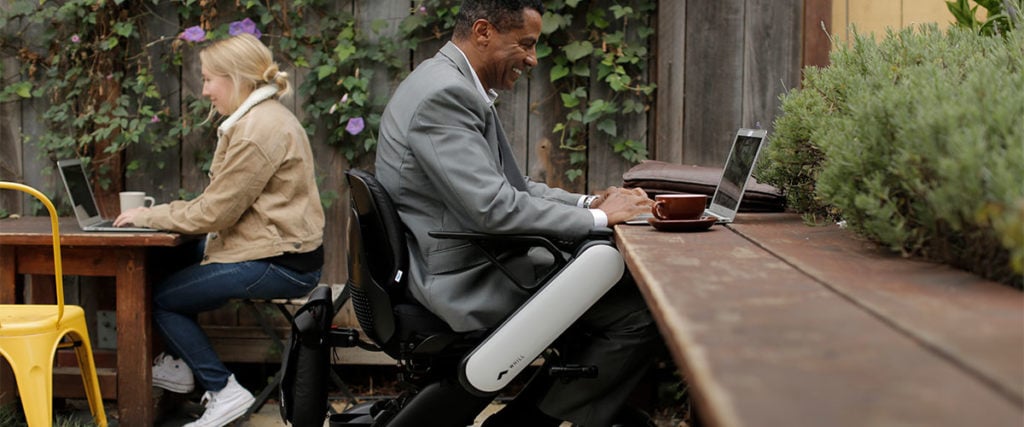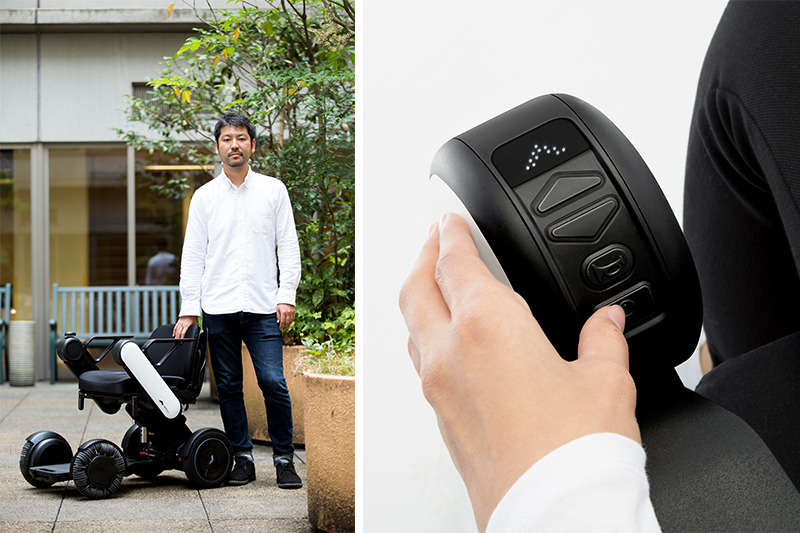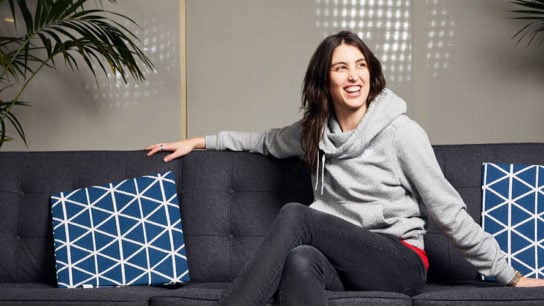Japanese startup WHILL has devised a futuristic mobility device that challenges our perception of wheelchairs and vastly improves the experience of wheelchair users. Next, it’s going to change the way we commute.
Determined to help solve a problem shared by a friend, WHILL, a pioneering Japanese mobility device innovator, set out to reinvent the wheelchair. The brainchild of three founders with backgrounds in engineering and design, their proposition was to make over personal mobility devices, targeting how they moved, how they looked and how they were perceived. We talk to Satoshi Sugie, WHILL’s CEO and co-founder, as he shares his vision of the future of transportation – for everyone.
The idea of reinventing the wheelchair was dreamt up by Satoshi and his friends Junpei Naito and Muneaki Fukuoka after their friend, a wheelchair user, revealed his situation in despair. “I’d given up on going to the grocery store even though it’s just two blocks away,” he told Satoshi. What was hampering him from engaging in his social life was not the fact he lacked mobility, but more the fact he felt labelled by his wheelchair. “He didn’t like the negative attention he got while using this large, unwieldy device in public. He didn’t want to be seen as weak,” Satoshi recounts.
In response, the three friends, coming from backgrounds in design and engineering in the automotive, consumer electronics and medical device industries, set out to build an alternative that could restore their friend’s confidence. “We wanted to create a mobility device that changed the way he felt in public as well as the way the public felt about him so that he could be the outgoing and independent person he used to be,” says Satoshi, who worked previously as an designer at Nissan.
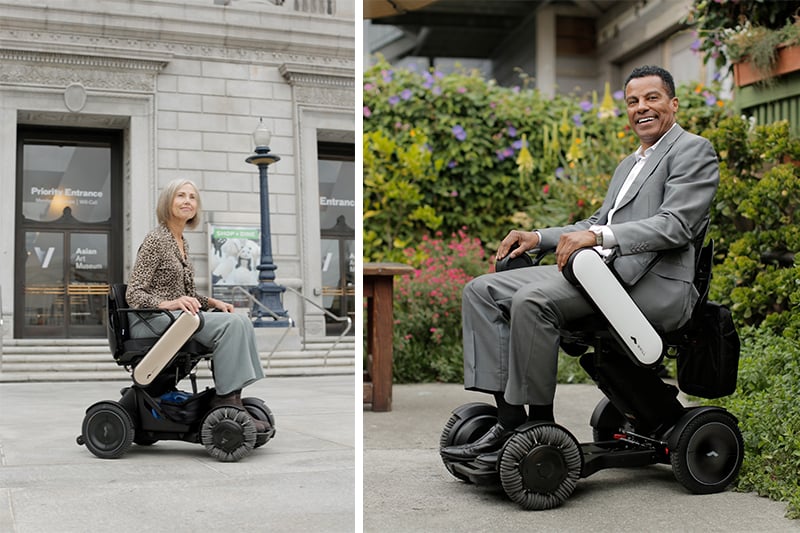
After a year of development, Satoshi and his friends debuted their prototype in 2011 at the Tokyo Motor Show, where they realised their friend was not the only one dissatisfied with his wheelchair experience. “Many people desire this kind of innovation and the newfound freedom it brings,” says Satoshi. That same year, they founded WHILL, determined to reinvent the wheel.
Seven years later, Satoshi and his team of engineers have reimagined every aspect of the wheelchair, developing three motorised mobility devices to address some of the long-standing issues and challenges encountered with traditional models. First, they addressed the limited manoeuvrability of traditional designs with their Omni wheel, a patented design consisting of 24 small rollers that allow users to make tight turns in small indoor spaces, circumvent obstacles and traverse larger gaps without having to rely on assistance. WHILL’s latest device, Model C, which comes with retractable armrests, is designed with convenience in mind. It’s easy to assemble and can be dismantled in less than ten seconds. With an ergonomic joystick, users don’t have to have powerlifter arms to propel themselves forward, and, when necessary, they can even remotely control their device with WHILL’s smartphone app.
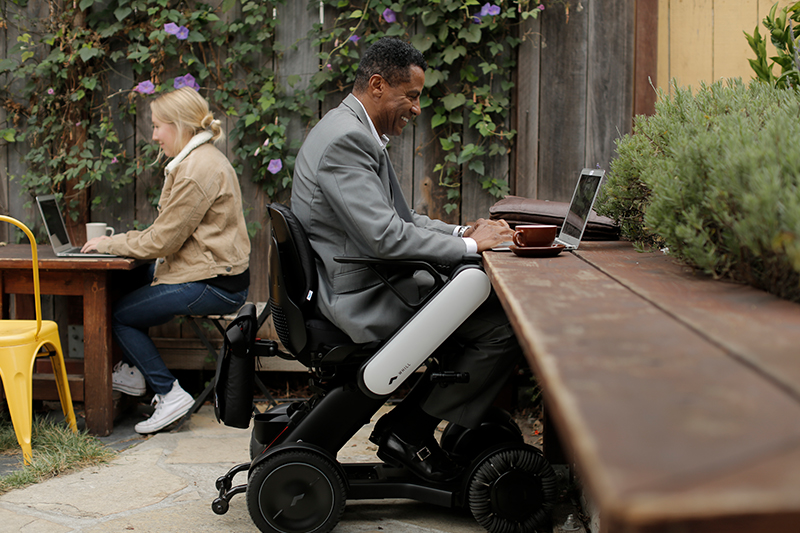
“A mobility device serves as an individual’s legs. That’s why every component has to be carefully selected to build a product that offers versatility and an enjoyable driving experience,” says Satoshi. And on top of that, he considers its look to be just as important as its technology. WHILL’s devices have been given a sleek and minimalistic form, looking more like a seated version of a Segway than a medical wheelchair. “We’ve adopted an active design language in the design; everything is considered from the user’s standpoint,” explains Satoshi – and that includes how it makes them feel. “Now, people come up not to ask me if I need help, but to talk to me and ask about the wheelchair,” one user says. “Instead of feeling self-conscious, I want users to feel positively empowered by our device – not only because they can now travel freely and achieve daily tasks with ease, but because they can display their true personality,” says Satoshi.
WHILL’s innovations are part of a bigger initiative to build a barrier-free living environment. “Although bicycles and electric scooters are readily available in the market, they don’t accommodate individuals with physical limitations,” Satoshi points out. Furthermore, the market for better mobility assistance is only set to grow. As the world’s aged population grows dramatically from 900 million people in 2017 to 2.1 billion people by 2050, so too will the need for assistive devices. In light of this, WHILL has also recently launched into Mobility as a Service (MaaS) business, aimed at providing mobility-sharing services and last-mile transportation solution. “Our goal is to build a pedestrian transportation service that can be utilised normally, like public transportation,” he explains. Currently, they are focused on developing an autonomous personal mobility device system to improve PRM (Passengers with Reduced Mobility) experiences in public areas such as airports. Next, Satoshi pictures a community where people – with or without reduced mobility – can order an Autonomous Drive Electric Vehicle for last-mile connectivity in a way that’s as hassle-free as booking an Uber. “Ultimately, we want to deliver fun and innovation to pedestrian travel for everyone, regardless of their age, nationality, and capability to walk.”
Related Articles
Meet the Singaporean App Helping You Track Your Carbon Footprint
